
Key Takeaways
- NEA Higher Ed members are sitting on mountains of data that they assembled through federally funded research but are now cut off before sharing the findings that U.S. taxpayers paid for.
- Their topics include energy transition; programs to increase the number of U.S. computer scientists, cybersecurity specialists, physicists and STEM teachers; and support for students with disabilities.
- The implications are huge. Not only are innovations buried, but jobs in science are being lost and the next generation of scientists cut out.
“Everybody wants more computer-science teachers—and we are on the verge of telling them how to do it—and now we can’t!” says Caroline Hardin, a Western Washington University professor.
Earlier this month, the National Science Foundation (NSF) suddenly terminated Hardin’s three-year, $231,554 grant, about two-thirds of the way through her team’s work. Their task? Investigating the lack of licensed computer-science teachers in U.S., especially women and educators of color. Today, Hardin and her team know the solutions—but their grant’s termination means they can’t share them. “You can’t tell me that this is about efficiency. This is so profoundly inefficient!” says Hardin. “It’s throwing away results that taxpayers paid for!”
The same could be said for Claire Wladis’ $2.2 million research grant, aimed at helping students with short- and long-term health issues. Or Reem Jaafar’s $530,000 grant to train—no, to transform—STEM faculty’s ability to support students.

More than 1,600 NSF grants, totaling more than $1.5 billion in research investments, have been terminated since April, according to Grants Watch. And while big-name research institutions account for many of those grants—Harvard University alone had $150 million worth of NSF grants terminated—the axe has fallen especially hard at state universities and community colleges.
These institutions simply don’t have the money to fill the gaps and enable faculty to finish their work, NEA Higher Ed members say. Midway through their grants, these union members are sitting on mountains of new information but no longer have the means to publish their findings or share their innovations with the public and the federal agencies that asked for them.
Climate justice. Career pathways for U.S. cybersecurity specialists and wastewater management experts. Teacher recruitment and retention in math and science. Access to higher education for students with mental and physical health issues. These issues are among today’s top STEM challenges—and NEA Higher Ed members won NSF grants (not an easy feat!) because they have the unique expertise to dig in and solve them. Millions and millions of taxpayers’ dollars already have been invested in innovations that shuddered to a stop this month.
Now, research assistants are losing their jobs. The career paths of future scientists have ended.
“It’s heartbreaking,” says Hardin.
It’s also unclear what the Trump administration’s goal is, noted Politico this week. “This isn’t about cutting a few projects that embraced radical DEI or making some changes to get a little bit more efficiency. This is actually cutting meat and bone from the entire research enterprise,” said Rob Atkinson, president of the Information Technology and Innovation Foundation, told Politico. As scientists point out, if the Trump administration wanted to fund fewer diversity-related grants, they simply could. Instead, it feels like U.S. science—and higher education—is the target.
Energy Justice: What’s Next?
“You can’t even imagine. It feels like a ship going down,” says Krista Harper, an anthropology professor at the University of Massachusetts Amherst (UMass Amherst).
Harper and her colleagues at UMass Amherst’s Energy Transition Institute learned two weeks ago that the Trump administration had terminated its $6 million NSF grant, as well as a $1 million Environmental Protection Agency (EPA) grant.
“The thing is, U.S. science is a marvel,” says Harper. “It is better funded than any other scientific enterprise in the world. And there is no way that private industry or philanthropy or states can make up for the miracle of U.S. federal science funding, which in the scale of the U.S. federal budget, is just a drop in the bucket… It produces so many ripple effects in new technologies, new science, new medicine.”
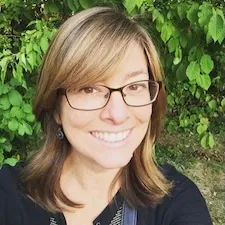
The energy institute’s goal? To lay tracks, metaphorically, away from fossil fuels and toward new, sustainable energy systems—and to make sure that no Americans are left behind in the transition. Faculty involved include technical experts: engineers, physicists, computer scientists, etc., and also social scientists, like Harper and UMass economics professor Michael Ash.
Their work ranges from the very technical—how to capture solar energy inside your house—to the more political and humane: what will it take to get communities, especially poor ones, to “not just accept, but to co-design and take charge of their energy future?” asks Ash.
Through the $1 million EPA grant, Harper and her team of undergraduate and Ph.D. students, including Shannon Callaham, had been working in the nearby town of Holyoke, Mass., to do participatory community-based research. (Fun fact about Holyoke: It has the largest, per capita, Puerto Rican population of any mainland U.S. city.)
“In that case, my role as a trained expert isn’t just to be the trained expert and tell people what we found out — it’s to find ways to design research in ways that residents and undergrads can participate in making that knowledge,” says Harper. “That’s another reason this is so upsetting—it’s a broader attack on our ability to make new knowledge.”
STEM Education in Crosshairs
More than half of the terminated NSF grants were STEM education grants, aimed at helping students train and succeed in STEM fields, reports the New York Times. Indeed, as of early May, “awards for STEM education accounted for 54 percent of those terminations, a loss of $773 million in funding.”
Among NEA Higher Ed members, these terminated grants include:
- a $1 million grant to the University of Albany, aimed at increasing the number of women faculty in STEM fields;
- a $1 million grant to Florida State University, a $1 million grant to the University of Florida, and a $1 million grant to Central Michigan University, all to recruit and support women STEM faculty;
- a $2.4 million grant to Florida A&M University and additional historically Black institutions in Florida, to work with 300 doctoral, post-doctoral, and early-career STEM faculty;
- a $2.6 million grant to Central Washington University, Eastern Washington University, and Western Washington to study racial gaps in STEM education.
With all of these projects, researchers are investigating questions like: what will it take for women faculty to persist in their STEM fields or for STEM-teacher prep programs to recruit and retain teachers of color? Much is at stake. More diverse educators leads to better outcomes for students of color, research shows. It means potentially increasing the number and success of future physicists, doctors, pharmacists, physical therapists, and more.
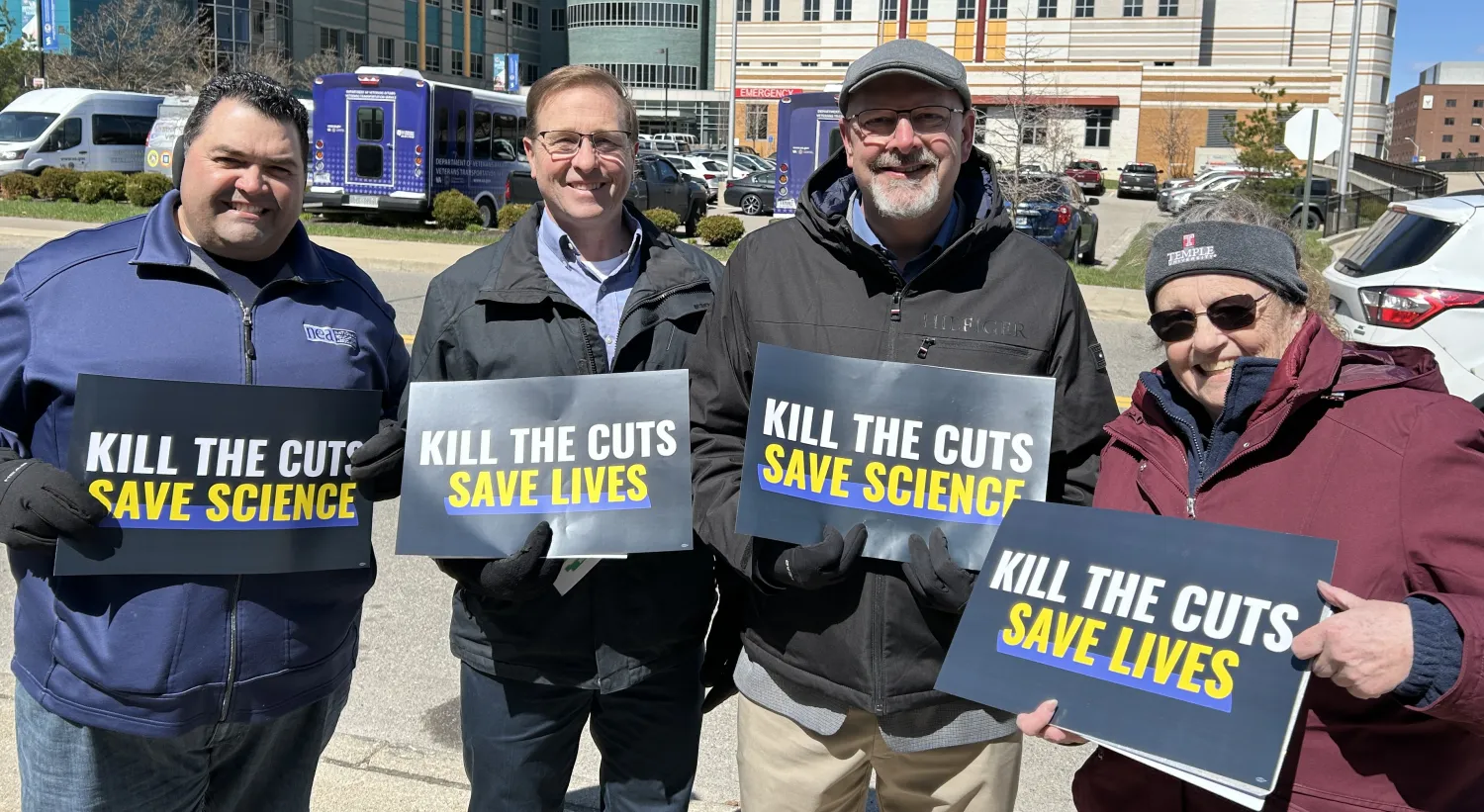
Cybersecurity Sacrificed, Too
They also include a three-year, $599,611 grant to Hudson County Community College (HCCC), in New Jersey, where faculty member Faisal Aljamal aimed to expand HCCC’s renowned cybersecurity program, especially among women.
Last year, about 20 percent of HCCC’s cybersecurity students were women, which is about the national average. Meanwhile the U.S. Bureau of Labor Statistics predicts that demand for cybersecurity jobs will increase by 31 percent by 2029 and 35 percent by 2031—almost eight times the average job growth. “This is what the nation needs—more cybersecurity professionals,” says Aljamal. “Everybody is talking about the international threats and the need for our graduates at federal agencies. This is what we’re contributing to our country’s defense!”
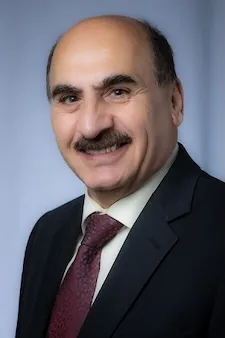
The first year of their work was completed this May and “the grant evaluator was amazed at what we were able to accomplish,” he says. “And then, all of a sudden, boom!”
With these terminations, the NSF may be attempting to comply with President Trump’s executive order prohibiting investments in diversity, equity and inclusion (DEI.) The form letters received by faculty simply say that their work “no longer effectuat(es) the program goals or priorities." But isn't cybersecurity a priority, asks Aljamal. Isn’t computer science a priority, asks Hardin.
Isn’t STEM education a priority?
“The status quo already preferences some groups,” says Hardin. “It’s so obvious when you look at who is in the tech fields! People in a lot of areas are being left out, and it’s hugely detrimental to American competitiveness. How do we get more rural students? More women? More people of color? … If you want to expand opportunities, you have to go to the people who don’t have the opportunities.”
A First-of-Its-Kind Study on Students with Disabilities
For the past year, math professor Claire Wladis has been leading a $2.2 million grant to the Borough of Manhattan Community College—one of the City University of New York (CUNY) institutions—and the Research Foundation of CUNY.
Her goal? To learn how students with chronic injuries or physical or mental health conditions experience higher education and figure out ways to better support them. “What helps or gets in the way when they try to get a degree during these health challenges?” asks Wladis.
In their first year, Wladis and her team gathered information from nearly 2,000 students, personally interviewing several dozen. Many students told them that they didn’t know how to ask for help from faculty or administrators, or were afraid to ask for help because they thought it would hurt their grades or career options. “One student was actually throwing up in the interview,” Wladis recalls. “We asked if they wanted to stop and they were like, ‘no, this is too important. I want to continue.’
“And now, we’re like, ‘it’s never going to see the light of day?’”
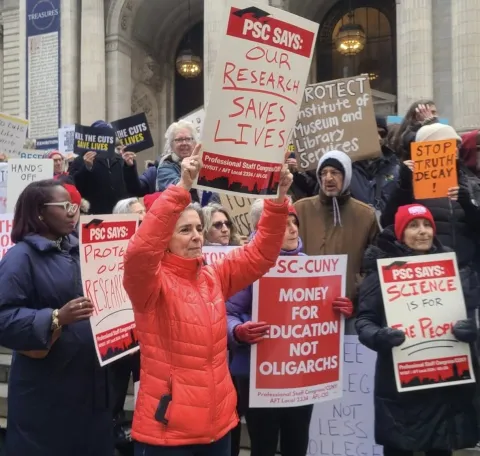
The interviews and surveys were groundbreaking. “This is an area where there is no research,” says Wladis. Her NSF-funded study would have been the first—and it had the potential to help hundreds of thousands of students across the nation. (Mental-health issues, in particular, are soaring among college students; in 2022, 44 percent of students reported symptoms of depression and 15 percent reported considering suicide, the highest recorded rate.)
“Already, tentatively, we could see patterns [in the data] that would have led to helpful recommendations,” says Wladis. “But we were cut off before we could do any formal analysis, at all.” Although CUNY is supportive of the project, the system “obviously has very limited resources,” she says. “CUNY doesn’t have an extra $2 million lying around.”
Devastation Across City University of New York Campuses
It is no easy task to win a NSF grant—and it’s even harder for faculty at underfunded two- and four-year public colleges. Only about 1 in 4 grant applications make it through merit review to get funding. The process “is excruciatingly painful—but it helps keep the standards high!” says Reem Jaafar, a professor in the math, engineering and computer science department at LaGuardia Community College, a CUNY institution.
Last August, Jaafar realized a long-held dream of hers to win a NSF grant: $530,002 aimed at boosting students’ success in STEM degrees (and consequently their success in New York City’s workplaces). This grant-funded work would have involved about 40 faculty members directly, plus many more through a robust diffusion model, says Jaafar, providing the kind of professional development that leads to “long-term behavioral change, so that faculty become change agents,” she said. “You go through this transformation and then you’re able to transform others.”
Quote byClaire Wladis , Math professor at the Borough of Manhattan Community College, a CUNY institution
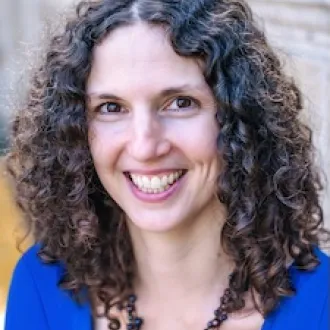
Over the three years, Jaafar estimates that trained faculty would have influenced about 5,000 students at LaGuardia, a formally designated Hispanic-serving institution (HSI). “Without making these investments, we’re going to enforce the longstanding barriers to access—and we’ll actually be falling short in workforce needs,” she says.
These aren’t the only NSF grants to CUNY institutions that have been terminated. Indeed, about $17 million in grants have been targeted, including the following:
- A $1 million grant to Queensborough Community College, Queens College and LaGuardia to develop a program that trains students in the emerging field of wastewater-based epidemiology. The goal was to train about 200 students for public-service jobs.
- A $1 million grant to LaGuardia, City Tech, which is a 4-year college, and the biotechnology company Schrödinger to create a program that provides hands-on, experiential learning and paid internships.
- A $700,000 grant to the College of Staten Island to increase students’ sense of belonging and retention through peer-led team learning. Already, this project was achieving dramatic increases in passing rates, but because of the grant’s termination its paid peer leaders have been dismissed.
